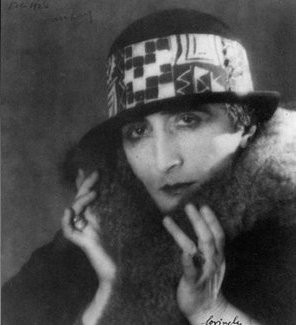Inventing Marcel Duchamp
dal 26/3/2009 al 1/8/2009
Segnalato da
26/3/2009
Inventing Marcel Duchamp
National Portrait Gallery, Washington
The Dynamics of Portraiture

Born in Blainville, France, near Rouen, Marcel Duchamp (1887–1968) first traveled to the United States in 1915. Forty years later he became an American citizen. Although not commonly considered in the context of American art, Duchamp was indelibly shaped by his adopted country. It was in the United States that Duchamp first made his mark on modern art even before his arrival, thanks to the explosive reception of Nude Descending a Staircase (No. 2) at the 1913 Armory Show.
Duchamp returned to France in 1923, making occasional trips back to the United States, where he settled permanently in 1942. He relished the opportunity to reinvent himself and did so frequently. Styling himself a provocateur, in 1917 he famously submitted a urinal, entitled Fountain, to a nonjuried art exhibition, from which it was rejected. The work bore his first pseudonym, R. Mutt. This alternate identity would not be his last.
Duchamp invented his best-known alter ego, Rrose Sélavy, in the early 1920s. Indeed, his attention to self-representation would become a hallmark of his art and would revolutionize portraiture, transforming it into a conceptual enterprise.
Recognizing that posterity would determine the true significance of his work, Duchamp told an interviewer in 1955: “You should wait for fifty . . . or a hundred years for your true public. That is the only public that interests me.” This exhibition takes him at his word.
This groundbreaking exhibition casts new light upon Marcel Duchamp (1887–1968), one of the most influential artists of the recent past. This show demonstrates that Duchamp harnessed the power of portraiture and self-portraiture both to secure his reputation as an iconoclast and to establish himself as a major figure in the artworld. In the process, he played a key role in the reinvention of portraiture, exerting a transformative influence from the early twentieth century to the present. The exhibition showcases approximately 100 never-before-assembled portraits and self-portraits of Duchamp ranging from 1912 to the present, including works by his contemporaries Man Ray, Alfred Stieglitz, Francis Picabia and Florine Stettheimer, as well as portraits by a more recent generation of artists, such as Andy Warhol, Jasper Johns, Sturtevant, Yasumasa Morimura, David Hammons, Beatrice Wood and Douglas Gordon.
The exhibition is accompanied by a fully illustrated catalogue published by MIT Press, featuring new research by leading scholars and a detailed chronology of Duchamp's life.
Co-curators for the exhibition are Anne Collins Goodyear, assistant curator of prints and drawings atv the National Portrait Gallery, and James W. McManus, professor of art history, California State University Chico.
The National Portrait Gallery, Smithsonian Institution, tells the stories of America through the individuals who have shaped U.S. culture. Through the visual arts, performing arts, and new media, the Portrait Gallery portrays poets and presidents, visionaries and villains, actors and activists who speak American history.
For exhibition press information, please contact Bethany Bentley, Public Affairs Specialist at:
Email: bentleyb@si.edu Phone: (202) 633-8280
The National Portrait Gallery is conveniently located at Eighth and F Streets, NW, in Washington D.C., above the Gallery Place–Chinatown Metrorail station (red, yellow, and green lines).
Museum Hours: 11:30 a.m.–7:00 p.m. daily. Closed December 25.
Admission Free



